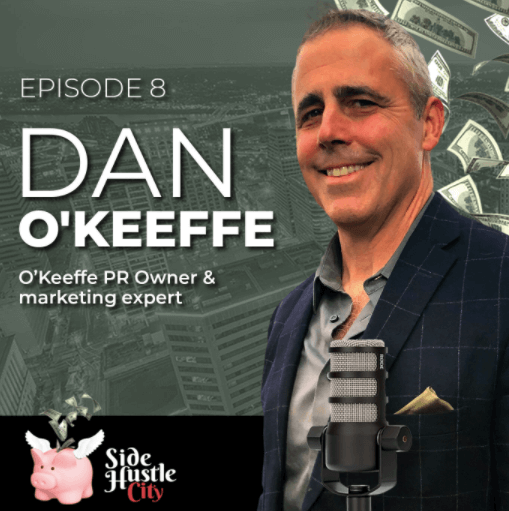Dan reflects on 50 years of the internet and discusses how it has changed storytelling and news over the years.
Two amazing things happened this year that have caused me to reflect heavily on my life and career as a public relations professional, content marketer and storyteller. I turned 50, and the Internet turned 50. Why then do I just keep getting grayer and grayer every year while the Internet appears to get more and more colorful by the day?
Reflecting on 50 Years of the Internet
My self-reflection kicked off Saturday night, October 26, at an annual event held by The Mercantile Library, a historic library in downtown Cincinnati that promotes history, reading, enrichment and community engagement. The event was the Library’s 32nd annual Niehoff Lecture, which featured Pulitzer Prize-winning journalist Bob Woodward (one of the two Washington Post journalists who broke the Watergate story on June 19, 1972). As the guest of my good friend and fellow former journalist Carolyn Pione Micheli, I had the great fortune to meet Mr. Woodward. That evening, a dream I never thought would come true was realized.
Back to the Beginning
Growing up, I remember studying about Watergate, which led to Richard Nixon’s resignation from office. Of course, I also was mesmerized as I watched Robert Redford portray Woodward on the silver screen in 1976’s All the President’s Men. I knew that Woodward’s and Carl Bernstein’s reporting was at the center of this national scandal, and as I grew older and began pursuing an education and career in journalism, I came to better appreciate the process the two journalists pursued to uncover the facts, apart from rumor and partisan politics. I was inspired to pursue and then obtain a degree in print Journalism.
I emphasize “print” for a reason. Because as I was making my way as a newspaper and magazine reporter, editor and eventually public relations consultant, a game-changing technology was slowly percolating within the halls of academia and government that in the mid-90s would begin to turn the world of journalism on its head. On October 29, 1969, just a few months after I entered the world, the Internet was born. And just three days after I met a bona fide living legend of journalism, the Internet celebrated its 50th anniversary.
The irony of these two occurrences happening around me within days of each other is staggering. The person who epitomizes investigative print journalism in its most ethical and objective form stands contrasted in my mind against the very platform that enables so many to share information in its most raw and unverified form, causing chaotic firestorms of misinformation and rhetoric on a daily basis.
Amidst the chaos, I believe we must look hard for meaning. Since the beginning of human existence, information has been communicated and shared as stories. Over the eons, the vehicles by which that information was shared has evolved and advanced with one consistent objective at play—to communicate facts. Yet, today, the facts are relegated to a supporting role in telling stories, and those trusted to convey the news that we trust to inform our decisions are…well…you and me. We no longer depend on newspapers and magazines or the once modern mediums of television and radio to deliver our news. We seek it out on Facebook, Twitter and YouTube, on blogs and subscription news feeds, and of course the websites belonging to those news outlets that used to only exist in print and on our air waves. And each one of these outlets and platforms is competing for clicks, impressions and unique users. The rush was always on to break a story, but never until the facts were collected and verified. Today, we’re simply in a rush to be first, as he or she who gets the most visits wins.
What Does the Future Look Like?
No telling what the future looks like, especially as technology continues to advance. My hope is that we can find a compromise between our voracious appetites for information and minute-by-minute updates to that information and the ability of professional storytellers to once again be afforded the time and resources to tell their stories with all of the facts in tow. Until that time, we must embrace one of the many pros the Internet affords us today—the ability to research for ourselves the facts, and the boundless ways in which we can tell our stories.
Looking back on this past year, especially with respect to these recent milestones I’ve just shared, I see 2019 as neither the end to my first 50 years nor a new beginning. Rather, it’s like the fold in the newspaper I still read every morning. In Journalism school, having a story appear on the front page was never enough. It had to appear “above the fold.” That was the money shot, because…in theory…that story always got read first. The funny thing is that it didn’t really matter where a story landed on the front page, because it was only the beginning, and often was only a couple of paragraphs in length. You still had to open the paper to get to the meat of the story and digest all of the details. That’s where you decided your opinion of the story and those in it.
After 50 Years of the Internet — What Now?
For my next 50 years, I will continue to follow Mr. Woodward’s example of doing the hard work, resisting the urge to be first, and focusing on getting it right…whatever “it” happens to be in my case. I’ll use the Internet as a resource for achieving my objective, not as the objective. I’ll search for the truth, and do my best to encourage those around me to do the same. And as a storyteller, I’ll strive to shed light on all sides of those stories, and hopefully encourage those after me to do the same.













